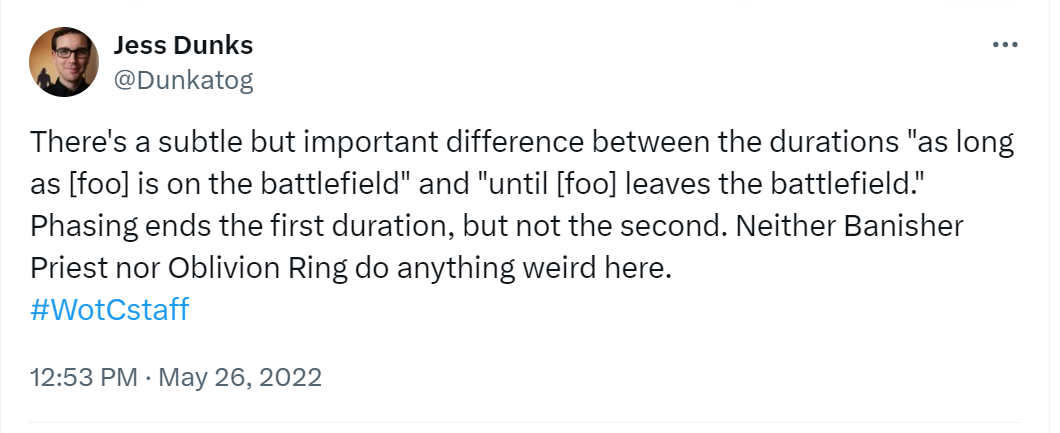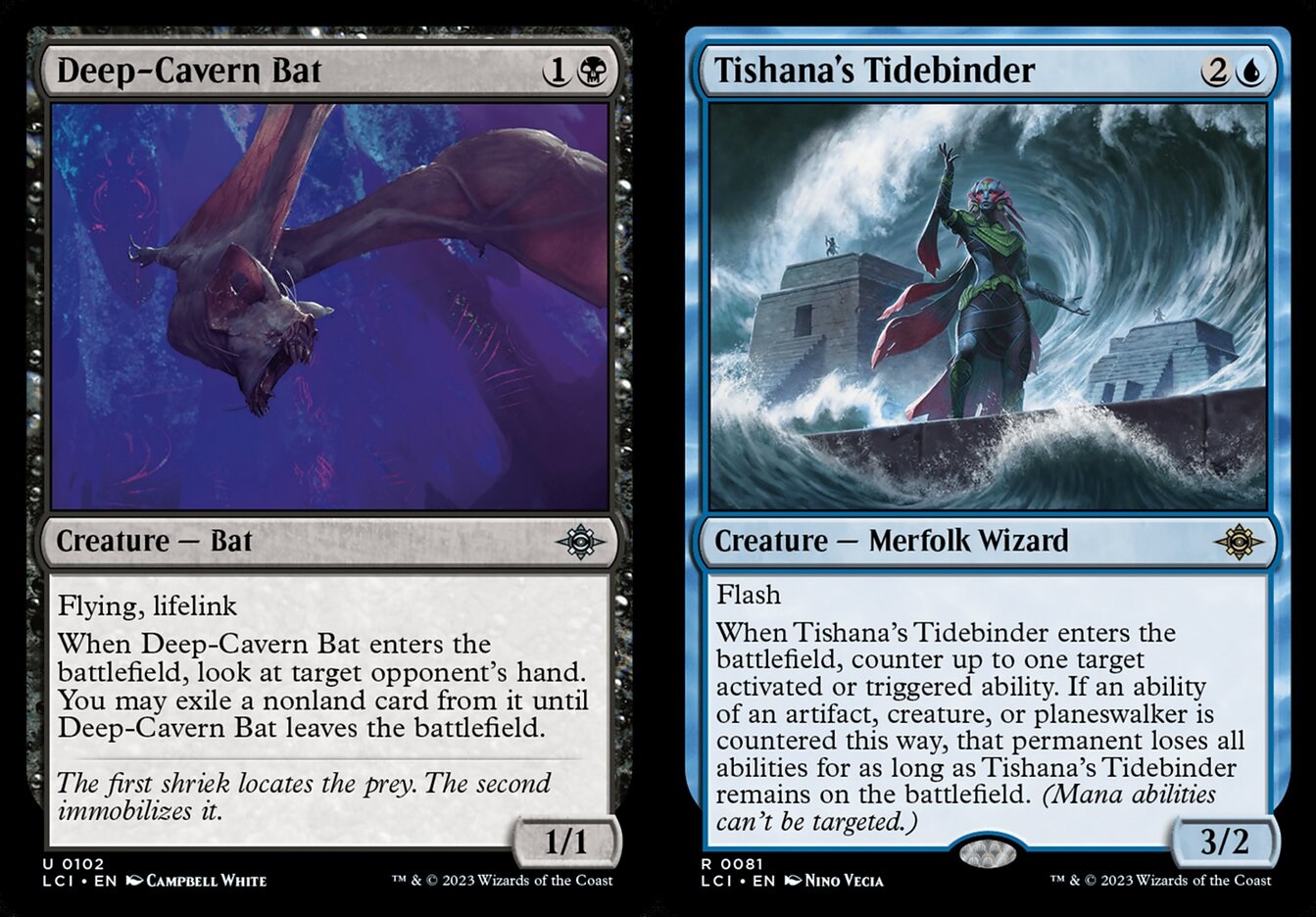The current Standard format is pretty great. There’s a new “best deck” every week or two, nearly any preferred play style is available as a viable choice, and most matchups seem to have a lot of play to them. And judging the format is fairly easy at the moment, as the rules interactions at the moment are fairly tame – with one big exception: Phasing.

As ever, Phasing remains A Little Weird.
There are a couple of tempo-y decks that play some phasing cards like March of Swirling Mists and Slip Out the Back, and both interact weirdly (and differently!) with some other commonly played cards, Deep-Cavern Bat and Tishana’s Tidebinder.
Here’s the short version: Tishana’s Tidebinder’s effect stops when it phases out, so the opponent can use their artifact, creature, or planeswalker again. Tishana’s blanking effect does not start again once the Tidebinder phases back in.
Deep-Cavern Bat does not leave the battlefield when it phases out, so nothing happens with its ability. The Bat’s ability is completely unaffected by phasing.
The long version goes like this:
The key difference here is how the two creatures are worded. Tidebinder says “for as long as Tishana’s Tidebinder remains on the battlefield,” while the Bat reads “until Deep-Cavern Bat leaves the battlefield.”
Let’s start with the Bat. The first relevant rule is 610.3:
610.3. Some one-shot effects cause an object to change zones “until” a specified event occurs. A second one-shot effect is created immediately after the specified event. This second one-shot effect returns the object to its previous zone.
This tells us that when Bat enters the battlefield and steals a card, the card stays stolen “until” the Bat’s second condition is met – until it leaves the battlefield.
Next up is 702.26d, which reads: The phasing event doesn’t actually cause a permanent to change zones or control, even though it’s treated as though it’s not on the battlefield and not under its controller’s control while it’s phased out. Zone-change triggers don’t trigger when a permanent phases in or out. Tokens continue to exist on the battlefield while phased out. Counters and stickers remain on a permanent while it’s phased out. Effects that check a phased-in permanent’s history won’t treat the phasing event as having caused the permanent to leave or enter the battlefield or its controller’s control.
With these together, we see the Bat never leaves the battlefield when phasing, so its condition isn’t met, so the ability keeps working and doesn’t give the card back. Bat’s ability is not impacted by phasing.
The long version with Tidebinder looks at rule 702.26f: Continuous effects that affect a phased-out permanent may expire while that permanent is phased out. If so, they will no longer affect that permanent once it’s phased in. In particular, effects with “for as long as” durations that track that permanent (see rule 611.2b) end when that permanent phases out because they can no longer see it.
So, when the Tidebinder phases out, its effect will end because it is no longer considered to be on the battlefield. Like the Bat, it is not considered to have left the battlefield, but it is also no longer seen on the battlefield.
And just in case there were any lingering doubts, we have a clarifying tweet from our illustrious rules manager:

Credits: Big thanks to Andrew Villawhatever for walking me through this an embarrassingly large number of times, and proofreading this post before it went live.


So what happens, if you phase out a bat while it’s ETB is still on the stack?
I guess you Exile nothing?
Does “treat it as if kt doesn’t exist” means you Exile you nards, does it fullfill the “if deep cavern bat is no longer on the battlefield as the ability resolves” (but it didn’t leave the battlefield).
Regardless of when the Bat is phased out, the ability is unaffected by Phasing. It doesn’t matter if the Bat is phased out in response to the ability or if the ability has resolved and then the Bat phases out some number of turns later – there is no connection between the ability and phasing.